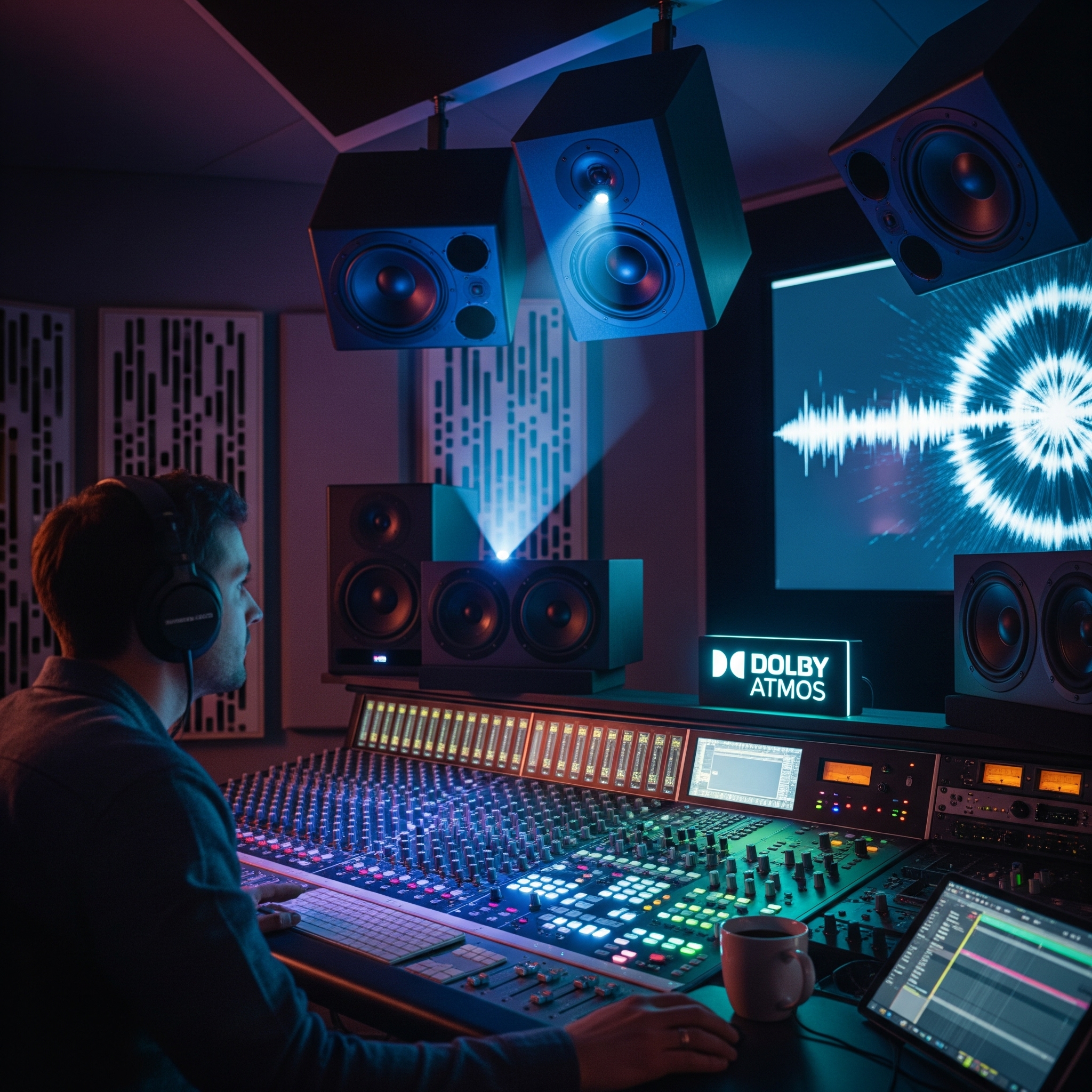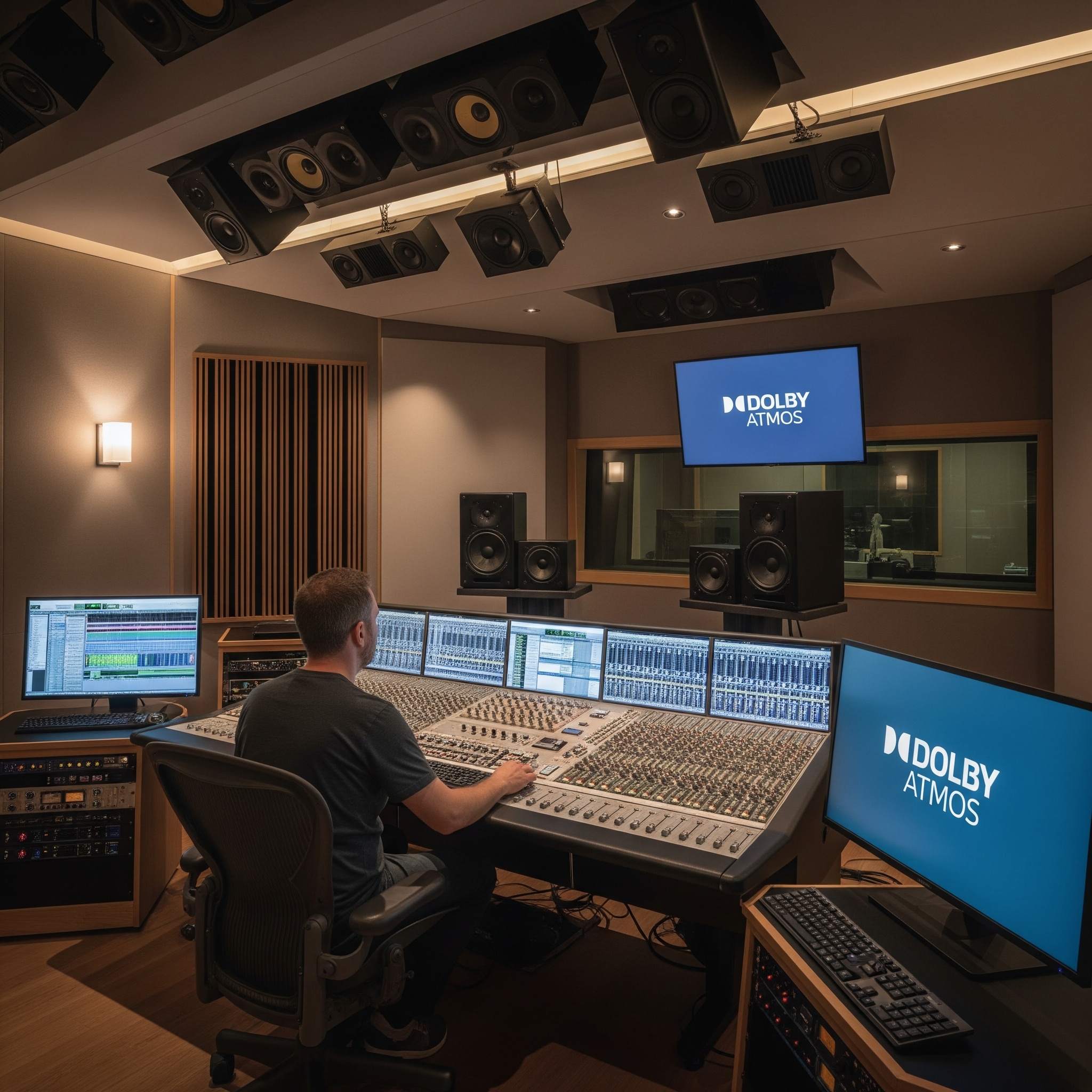Dolby Atmos is no longer just an audiophile flex or a movie-theater buzzword; it’s a format shaping how records are mixed, distributed, and paid for. But does that mean every studio should tear up the wiring diagram and go 7.1.4 tomorrow? Let’s cut through the hype, stick to verified facts, and make a call.
What “Atmos” actually changes
Unlike stereo’s two-channel panorama, Atmos lets you treat sounds as “objects” placed in a three-dimensional field. A dedicated renderer then translates that intent to whatever the listener has—headphones, soundbar, 7.1.4 speakers—so the mix adapts to the playback system while preserving spatial intent. That’s not marketing; that’s the architecture.
The money question: is there a revenue upside?
Yes—on Apple Music, there’s a documented, platform-wide financial nudge. Apple states that tracks available in Spatial Audio receive up to 10% higher sound-recording royalties compared to non-Spatial versions. This policy started with January 2024 payouts and doesn’t require fans to specifically stream the Spatial version for the bonus to apply. If your catalog has Spatial-available versions, your per-play share gets a 1.1x weighting.
That’s a real economic lever for labels, mixers, and indie artists. If your studio is a hub for commercial releases targeting Apple Music, Atmos is no longer just a creative decision—it’s a revenue strategy.
Where fans can actually hear it
-
Apple Music: Spatial Audio with Dolby Atmos on iOS, iPadOS, and macOS (with compatible Apple/Beats headphones and supported devices).
-
TIDAL: Atmos is available on supported hardware and apps (Apple TV 4K, iOS 15+, Nvidia Shield, etc.).
-
Amazon Music: Supports spatial formats including Dolby Atmos; delivery uses Dolby Digital Plus-based pipelines on consumer services.
Translation: listeners can hear your Atmos mixes widely today—on phones, TVs, soundbars, and multi-speaker rooms—if they’re on the right services and devices.
Distribution & deliverables (no guesswork, just specs)
-
Apple Music delivery: Provide a stereo version and a Dolby Atmos master. Atmos is delivered as a BWF ADM file; keep everything at 48 kHz/24-bit and conform frame rates and loudness targets as specified.
These aren’t suggestions—they’re table stakes if you want your Atmos mix properly ingested and credited.
 The gear and room: what an actual Atmos music room requires
The gear and room: what an actual Atmos music room requires
-
Speaker layout: Music studios commonly adopt 7.1.4 (seven surrounds + sub + four heights). Dolby publishes placement and angle guidance; get this wrong and translation suffers.
-
Renderer: You’ll need the Dolby Atmos Renderer (standalone or integrated, depending on workflow) to author, monitor, and export ADM.
-
DAW support: Current versions of Pro Tools, Logic Pro (10.7+), Cubase/Nuendo, Studio One 6, and others provide native Atmos toolsets or integration. Verify your exact version and platform.
None of that mandates a single “right” brand of monitors or a luxury buildout—but it does demand precision: angles, time alignment, bass management, calibration, and reliable room treatment.
Who should upgrade now vs. who should wait
Upgrade now if:
-
Your clients release music aimed at Apple Music’s frontline ecosystem and care about editorial placement/playlisting—there’s a royalty boost on the table.
-
You’re already doing label work or high-visibility indie projects that expect Spatial deliverables alongside stereo.
-
You see Atmos as a creative differentiator for artists seeking immersive catalogs (and you can maintain meticulous room calibration).
Consider waiting (or partnering externally) if:
-
Your room can’t physically support correct 7.1.4 geometry—or you can’t reliably calibrate and maintain it.
-
Your workload is primarily podcasts, voiceover, or stereo-first back catalog with limited incentive to re-mix. (Apple’s bonus applies to Spatial-available music, not spoken-word.)
-
You’re budget-constrained and can’t justify software, monitors, amps, I/O, and acoustic work without clear client demand. (DAW and renderer costs are real, as is the engineering time.)
A middle path is common: keep your A-room stereo-centric and book Atmos work in a trusted partner room—until demand and cash flow make an in-house build sensible.
Training that shortens the learning curve
Atmos mixing isn’t just “pan it overhead and print.” Object management, bed routing, downmix behavior, and translation to headphones all require new habits. If you’re upgrading, invest in education that’s recognized in the industry.
-
EngineEars Dolby Atmos Certification Course: Developed with Dolby Labs; a structured path with ~50 hours of self-training plus an instructor-led practical and final exam. Ideal for engineers moving from stereo to professional Atmos deliverables.
-
Inside look: EngineEars’ recap from an earlier cohort gives a sense of the curriculum’s scope and outcomes.
 Reality check: what listeners actually experience
Reality check: what listeners actually experience
Atmos adapts to playback—from discrete 7.1.4 rooms to soundbars and headphones—via the renderer’s metadata and downstream decoding. The promise is creative consistency across systems; the practice still demands conservative decisions that translate, especially for headphone listeners. This adaptive pipeline is the format’s core design, not an optional feature.
Verdict (for 2025)
-
If you run a commercial music facility serving artists who care about DSP traction—yes, upgrading makes business sense. Apple’s royalty policy and platform adoption have turned Atmos from a niche into a credible revenue and A&R play.
-
If you’re a small project room with limited demand—not yet. Get certified, line up client commitments, or partner with a certified room before you spend on speakers, amps, and construction.
Done right, Atmos isn’t a fad; it’s a new canvas. Done hastily, it’s an expensive translation problem.
Bottom line
If your studio lives where contemporary releases and platform strategy intersect, Atmos is both a creative frontier and a practical investment. If you’re not there yet, you can still be Atmos-ready—through EngineEars’ Dolby Atmos Certification—so when demand knocks, your room and your résumé say “go.”
